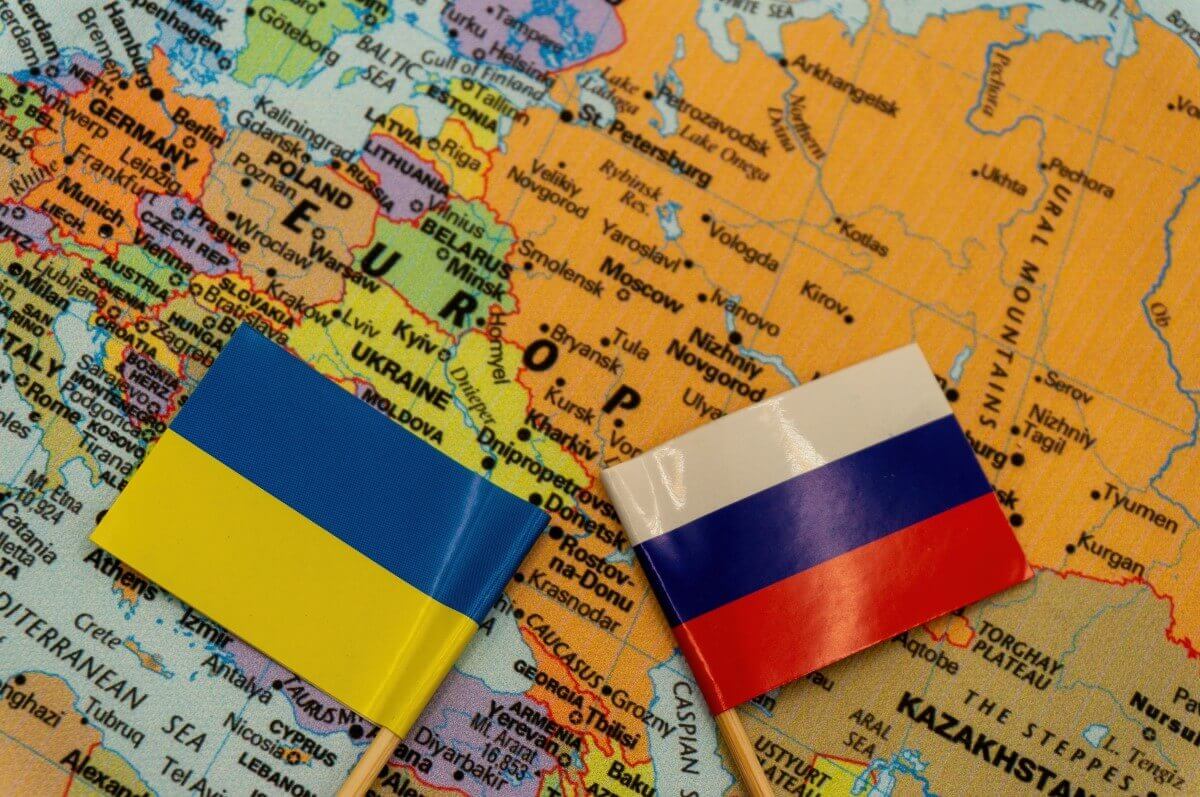The euro plummeted below $1.10 on Friday for the first time in nearly two years. It also dropped to a fresh seven-year low versus the Swiss franc as the war in Ukraine lowered traders’ expectations of European economic growth.
The European common currency shaved off 0.8% to $1.0967, hitting its weakest level since May 2020. That happened after Russian forces seized the largest nuclear power plant in Europe. Before that, Russian forces set a building at the complex ablaze.
Against the Swiss franc, another safe-haven currency, the euro tumbled down by 0.8% to 1.0066, reaching its lowest level since January 2015. Furthermore, the common currency dropped by 0.4% against the British pound to 82.56 pence, hitting its lowest level since July 2016.
Neil Jones, the head of FX sales at Mizuho, noted that the euro remains somewhat at the epicenter of risk aversion. He also added that the war and the effects of soaring energy and gas prices would likely undermine European consumption and economic growth prospects. Jones thinks that considering rallying energy prices and the European Central Bank’s reluctance to change its rate policy, it won’t be surprising for the euro trend to continue lower.
While Forex markets do not expect interest rate hikes at the ECB’s next meeting, investors believe that the U.S. Federal Reserve will raise interest rates at its March 15-16 meeting for the first time since the Covid-19 pandemic. Pressure on central European currencies is rising. On Friday, the Czech National Bank announced that it was intervening in the market to hinder the depreciation of the crown. The currency was trading at an almost 20-month low against the U.S. dollar at last.
Poland’s zloty also plummeted
Poland’s central bank decided to intervene this week. Despite that, the zloty plunged to a 13-year low against the euro. Meanwhile, Hungary delivered its most aggressive rate hike since 2008 as the forint also hit its record lows.
Furthermore, the rouble plunged back into record lows against the greenback and euro in volatile Moscow trade. On the other hand, the U.S. dollar index jumped by 0.6% to 98.335, after jumping to its highest level since May 2020 against a basket of peers.
On Friday, the Australian dollar continued its advance, supported by the commodities boom. The Aussie jumped to a four-month high of $0.7375 versus the greenback. However, high energy prices have prevented the Japanese currency from benefiting from the safe-haven flows. That’s because Japan is a net importer of energy.
Even though the yen briefly increased against the dollar when news of the fire emerged, later it gave up its gains. The yen traded little changed at 115.38 per dollar at last.
In Asia, the Indian rupee declined past the 76 per dollar mark on Friday, hitting its lowest level since mid-December. The deepening crisis in Ukraine caused Asian shares to collapse to 16-month lows. Traders are watching out for potential central bank intervention.
On Friday, the rupee changed hands at 76.16/17 per dollar after reaching 76.1750 – its lowest level since December 17. Before that, the currency had closed at 75.91 in the previous session. Investors noted that after the initial drop in the dollar/rupee, banks and importers rushed to purchase the dollar amid the ongoing geopolitical risks.
How did the other Asian currencies fare?
Most EM Asian currencies and stocks decreased on Friday amid heightened investor anxiety. This occurred after reports said Russian forces had attacked a nuclear plant in Ukraine.
A senior forex trader at a private bank noted that forex markets are going to be volatile until the war concludes. Expectations of higher inflation have increased. The rupee will likely move in tandem with other Asian currencies unless RBI intervenes.
Oil prices rallied recently. Investors fear that Western sanctions might disrupt Russian oil exports. These concerns outweighed the possibility of more Iranian supplies—currently, India imports more than two-thirds of its oil needs. As a result, the surge in crude threatens to push up the country’s trade and current account deficit. It will also pressure the rupee.
Rahul Bajoria, an economist with Barclays, stated that he now expects CPI inflation to average at 5.1% in FY22-23 compared with 4.5% previously. Furthermore, the rally in international commodity prices, especially crude oil, is a crucial source of concern. However, if global crude prices stay at the current $110/bbl levels, domestic pump prices will likely increase at least 20% over the coming months.











